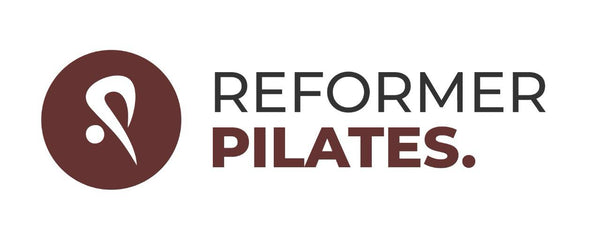When people explore new ways to get stronger, feel lighter, and improve how their bodies move, many ask, "Does reformer Pilates burn fat?" The curiosity makes sense. The method looks graceful, yet the intensity builds quietly in the muscles. There is control, precision, and a strong focus on technique. That combination feels different from traditional gym workouts. Instead of fast repetition and stress, the body works with intention, balance, and alignment.
Weight loss is not only about burning calories. It is about building muscle, improving metabolism, and supporting healthier movement patterns. The beauty of this method is how it trains the entire body without forcing strain.
What Makes the Method Unique
Before diving into whether Reformer Pilates helps with weight loss, it helps to understand why it stands apart. The reformer machine uses springs, straps, and a moving platform. This creates resistance that adjusts to your strength and range of motion. Muscles work in lengthened positions rather than shortened, compressed ones. That helps create lean tone rather than bulk.
The controlled movement pattern also encourages posture correction and full-body coordination. These qualities make the workout efficient and effective.
Does It Help With Weight Loss
Many people ask whether sessions alone are enough to lose weight. The honest answer is that weight loss depends on overall lifestyle, consistency, and body chemistry. Yet, this method plays an important role. It strengthens deep stabilising muscles and increases core activation. When muscles strengthen, metabolism improves. A stronger metabolism supports long-term body change.
Which means progress comes from a steady routine, not quick pressure. People who train regularly feel more aligned and aware of their bodies. That awareness often leads to healthier choices.
The Role of Muscle Tone
Weight loss is not only about losing fat. It is also about gaining strength. Lean muscle helps the body burn more calories during daily activities, not just during workouts. Because the movements are slow and controlled, muscles work deeply and effectively. That layered muscle activation helps shape the waist, legs, arms, and back.
Over time, the tone becomes visible. Many people say they feel taller and more aligned. The improvement brings both aesthetic and functional benefits.
Mind Body Connection
One unique benefit of this training style is its ability to improve the relationship between movement and awareness. Stress often affects weight and energy. When the body feels grounded, the nervous system becomes calmer. Breathing becomes deeper. The body responds more positively to change.
This mindful approach builds healthier physical habits. It embodies the concept of profitability, meaning the effort invested gives meaningful returns in energy, confidence, and progress.
How Often Should You Practice
Most people see noticeable results with two or three sessions each week. Beginners often start with one weekly session and build from there. The goal is consistency, not intensity.
Can It Replace Cardio
It depends on personal goals. For some, Reformer Pilates provides enough challenge to support fat reduction and tone. For others, a blend of low-impact cardio, such as walking or cycling, may enhance results. The combination creates balance. Still, many experience improved endurance and heart rate elevation during sessions, especially as skill increases.
How It Impacts Posture and Movement
When posture improves, the body uses energy more efficiently. Poor alignment can make walking, sitting, or moving feel heavy. The reformer focuses on spine health, shoulder alignment, and hip stabilisation. When the body moves correctly, workouts feel smoother, and joints feel supported.
Better alignment often decreases discomfort. That makes exercise more enjoyable and easier to maintain long-term.
Realistic Expectations
Results vary. Some people notice changes within a few weeks. Others feel the transformation gradually. Clothing may fit differently before the number on a scale changes. Strength and energy improvements often appear first.
Remember that long-term progress depends on patience and routine. Sustainable fitness always supports profitability in both physical and emotional well-being.
Tips for Better Results
- Stay hydrated.
- Focus on breath control.
- Practice regularly.
- Pair with balanced nutrition.
- Rest when needed.
These habits support healthier progress and reduce stress. The process feels steady and natural.
The Role of Instruction
Working with skilled instructors, especially those trained through studios such as Reformer Pilates, helps guide proper form. Professional guidance prevents strain and ensures exercises activate the right muscles. Technique matters more than speed.
When technique improves, intensity grows naturally. The workout becomes more profound and more transformative. That experience feels empowering.
Final Thoughts
So, Is Reformer Pilates Good for Weight Loss? Yes, especially when combined with consistency, mindful eating, and balanced movement. The method trains the body from the inside out. It improves posture, builds strength, and deepens awareness. The results are often subtle at first, then surprisingly powerful.
Weight loss feels more sustainable when it grows from intention rather than pressure. This practice supports that approach. It helps people feel connected, supported, and strong.
Over time, the method becomes more than an exercise. It becomes a way of living in balance, with presence and control.
FAQs
1. How long until I notice results
Some notice strength and posture changes within weeks. Visible tone develops with consistency.
2. Can beginners start immediately
Yes. Instructors modify exercises to support comfort.
3. Does it help reduce belly fat
It strengthens core muscles, which supports a better shape and alignment.
4. Do I need other workouts too
Not always. Some combine it with gentle cardio for boosted fat loss.
5. Can it support long-term weight maintenance
Yes. The method encourages balance, awareness, and sustainable routine.

